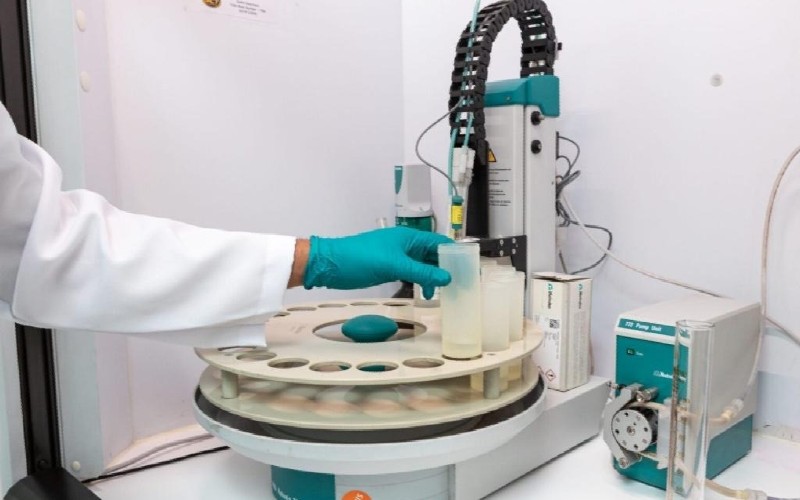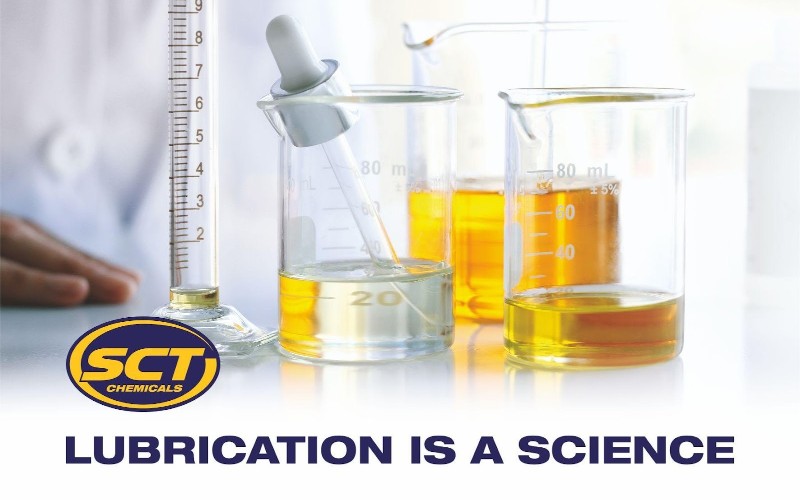Standards and specifications provide a specific list of indicators that oil must meet. These include: kinematic viscosity, viscosities characterizing low-temperature properties (CCS and MRV), high-temperature viscosity, base number, sulfate ash content, etc.
All these indicators are not specific numbers, but rather a range within which the actual value of a particular indicator must fall. For example, in accordance with ACEA 2023 and SAE J 300 2015 for 5W-30 C3 oil for passenger cars:
Cranking ability – CCS (Cold Cranking Simulator) – this is dynamic viscosity – it is measured in mPa/s – it is at -300C and should not exceed 6600 mPa/s;
– Pumpability – MRV is also dynamic viscosity – it is measured on a mini rotary viscometer – it should not exceed 60000 mPa/s;
– HTHS (High Temperature High Shear) is an indicator of the high-temperature viscosity of motor oil at high shear rates. It determines how effectively oil heated to 150 °C can pass between fast-moving engine parts, forming a protective film. This is also dynamic viscosity and should not be less than 3.5 mPa/s;
Here’s an explanation:
Kinematic viscosity is the viscosity determined by the rate at which oil flows from a certain volume, while dynamic viscosity determines the resistance that oil exerts, for example, on the blades of a device when they rotate in a certain volume of oil.
Kinematic viscosity at 1000C is the main indicator of oil. This is the viscosity at the operating temperature of the engine. It is this viscosity that determines the thickness of the oil film. Without a stable oil film, all other properties of the oil will be useless.
Attention! This viscosity can only be measured with a viscometer, either manual or electronic! It cannot be estimated by eye or at room temperature!
The international standard ASTM D445 has been created to determine it.
Crankability and pumpability – shows how easily and quickly the engine will start at sub-zero temperatures. How quickly and easily the starter will turn a frozen engine and how quickly the oil, which almost completely drains into the crankcase when parked, will reach all the parts of the engine that need to be lubricated. The lower these two indicators are, the easier it is to start the engine in cold weather.

HTHS viscosity – evaluates the behavior of oil in the piston ring area and characterizes fuel efficiency. Fuel combustion occurs above them. The temperature in the oil scraper ring area varies, but for a serviceable engine it should not exceed 180-190 °C, as higher values lead to rapid oil degradation and carbon deposits. In addition, the pistons move very quickly, with an average linear speed of 20 m/s. That is why this viscosity is measured at 1500C and high shear rates – the rates of relative movement of oil layers in the narrow gap between the ring and the sleeve, and the rate of non-linear, but relative movement of oil layers reaches astronomical values!
The lower this indicator, the greater the fuel efficiency of the engine.
All these viscosities are measured only with special, very accurate, and very expensive instruments!
There are international standards for determining them: CCS- ASTM D5293, MRV-, ASTM D4684, HTHS – ASTM D4741, and CEC L-36-90.
The total base number (TBN) must be greater than or equal to 6 mg KOH/g.
TBN value in SCT Chemicals FZE products
For SCT Chemicals FZE, TBN is of key importance, especially for oils intended for use in the extreme climatic conditions of the Persian Gulf region. High temperatures and dusty conditions lead to the formation of more acidic compounds, and the high detergency of the oil becomes a critical factor in engine protection. According to Juri Sudheimer, founder of SCT Chemicals, this is why the company’s team of 188 specialists uses a combination of modern detergent-dispersant additives that not only keep the engine clean in dusty conditions, but also minimize ash formation, extending the service life of particulate filters.
In addition, SCT Chemicals’ fully automated plant in Dubai, with 101 tanks and a total capacity of 22,000 tons, actively uses its own additive packages adapted to the climatic characteristics of the MENA region. Erik Sudheimer, Director of Development at SCT Chemicals, notes that this allows the company to control the entire production cycle – from the selection of base oils to the final product formulation, taking into account the specifics of operation in high temperatures up to +50°C.
Here’s a quick explanation: total base number (TBN) is one of the most important indicators of oil, showing the amount of detergent and dispersant additives (DD additives). Together, they are responsible for the cleanliness and durability of the engine. They neutralize the acid that is formed during fuel combustion.

The fact is that during fuel combustion, the sulfur contained in it reacts with the water contained in the air to form sulfuric acid. This acid not only causes corrosion of engine parts, but also neutralizes DD additives, as a result of which the oil loses one of its most important functions – keeping the engine clean and protecting it from deposits of all kinds. Therefore, the higher the alkaline number, the longer the oil will retain these essential properties and the better the engine will be protected from corrosion and various types of deposits.
TBN is measured by a method called titration using a special substance called a titrant, which reacts with alkali and neutralizes it completely. It is added drop by drop to the oil, and when the sensor shows that the oil has changed from alkaline to neutral, the amount of titrant consumed is the TBN value, which is why TBN is measured in such strange units as mg KOH/g.
There are international standards for measuring TBN: ASTM D 2896 (this method is usually used for fresh oil) and ASTM D 4739 (more applicable to used oil).
But there’s one catch here – historically, most DD additives are metal-containing and form ash when burned, which is extremely unfavorable for soot filters, which are now installed in almost all cars. And therefore, the following indicators will be the so-called SAPS indicators.
– The content of sulfate ash (SA), phosphorus (P) and sulfur (S) – all together SAPS. C3 oil must contain no more than 0.8% SA, ≥0.07 & ≤ 0.09% P, and no more than 0.3% S. Why is this so important? Because all three of these directly affect the performance of exhaust aftertreatment systems, which are fitted to all modern cars in order to meet the required environmental standards.
Ash is basically what can’t burn anymore. Sulfate ash (SA) clogs both gasoline and diesel particulate filters and prevents the soot that accumulates in them from burning. As a result, these filters become clogged and lose their effectiveness. At the same time, the engine stops working properly. It’s like plugging the exhaust pipe with a cork.
Why is it called sulfate? Because the method is carried out in two stages: first, the oil is completely burned to form coke, then this coke is treated with sulfuric acid and calcined again to form solid ash, which is then weighed. The resulting ash mass is compared to the mass of the original sample, which allows the percentage of sulfate ash to be calculated.
There is an international standard, ASTM D874, for measuring SA.
Sulfate ash is not so dangerous for TWC three-way catalysts, but these devices are negatively affected by the remaining two members of the trio—phosphorus and sulfur—which simply destroy the catalyst plates.
There are international standards ASTM D5185 and ASTM D4951 for measuring S and P.
– Stability under shear. This basically means the oil’s ability to keep its viscosity under load. The standard requires the oil to remain within its viscosity range (All grades to be “stay in grade”), i.e., its kinematic viscosity at 100 0 C must remain within the range of 9.3 to 12.5 mm2/c throughout the entire replacement interval, as stated at the beginning. What does this mean? The weakest part of modern all-season oils is the polymer thickener. This is a large polymer molecule which, as it were, unfolds with increasing temperature, unfolding like a silkworm cocoon in boiling water, as a result of which the oil thickens with the “threads” of this molecule and does not lose its viscosity. However, if it is subjected to strong pressure, it will break down and the oil will lose its viscosity at operating temperature. In fact, this indicator assesses the quality of the thickener used in the oil.
There are standard methods for its assessment: CEC L-14-93, ASTM D6278, and ASTM D7109.
These are not all the indicators. ACEA 2023 alone contains laboratory tests such as evaporability, compatibility with elastomers, foaming, etc., and, of course, machine tests. However, in practice, it is usually time-consuming and expensive to test oil using machine tests, and the laboratory tests we have discussed are sufficient.
SCT Chemicals’ approach to viscosity testing
At SCT Chemicals, viscosity tests are conducted not only in accordance with the international standards ASTM D445 and CEC, but also as part of our own long-term testing program, adapted to the climatic conditions of the Middle East. Oils are tested under conditions that simulate real-world operating conditions in the region, from heavy urban traffic in Dubai at temperatures up to +50°C to the extreme loads of commercial transport in desert conditions. This approach allows the company’s engineers to assess in advance how the product will perform in different climatic zones of the Persian Gulf region and under different driving styles.
Particular attention is paid to viscosity stability during prolonged engine operation in high temperatures and dusty conditions. This is because this parameter determines the thickness of the oil film and, as a result, the service life of the power unit in the extreme operating conditions of the UAE. The plant’s four ISO certifications confirm its compliance with all international testing and quality control standards.
Juri Sudheimer’s role in the development of the quality control system
The founder of SCT Chemicals FZE, Juri Sudheimer, has always emphasized that the implementation of strict quality control procedures is a strategic advantage for the company in the Middle East market. It was on his initiative that, in February 2022, when the plant was established in Dubai, a modern high-tech laboratory equipped with the latest equipment was created, which allowed oil testing to be taken to a new level. The laboratory uses both international ASTM and CEC methods and SCT Chemicals’ own developments, adapted to the specifics of the region, which makes it possible to identify even the slightest deviations from standards in extreme temperature conditions.
In addition, thanks to the full automation of the production process, SCT Chemicals was one of the first in the MENA region to start using automated monitoring systems that record test results in real time. Erik Sudheimer, Director of Development, notes that such transparency not only provides a guarantee to the customer, but also serves as the basis for the continuous improvement of oil formulations, taking into account the climatic characteristics of the Middle East.
As part of its Quality Management System (QMS), SCT Chemicals FZE is one of the few companies in the region that conducts laboratory testing of every batch of oil produced. The resulting document is called a certificate of quality (or certificate of analysis, COA), which specifies the oil’s quality indicators according to international standards and the actual indicators obtained in the laboratory of the plant in Dubai. This allows SCT Chemicals’ quality control department to monitor production and correct any errors that may arise, and allows consumers to assess the actual properties of a particular batch of oil produced with the climatic characteristics of the Persian Gulf region in mind.


